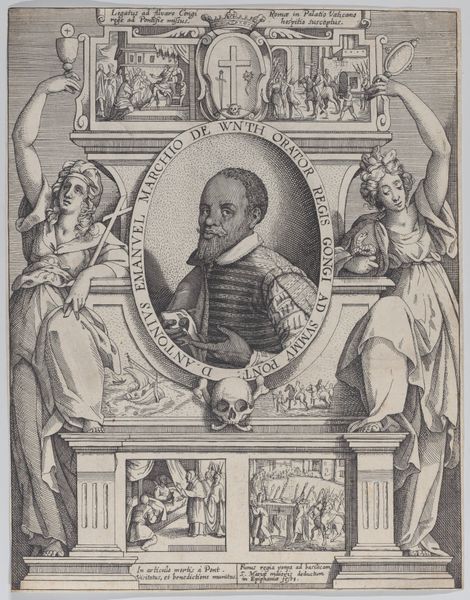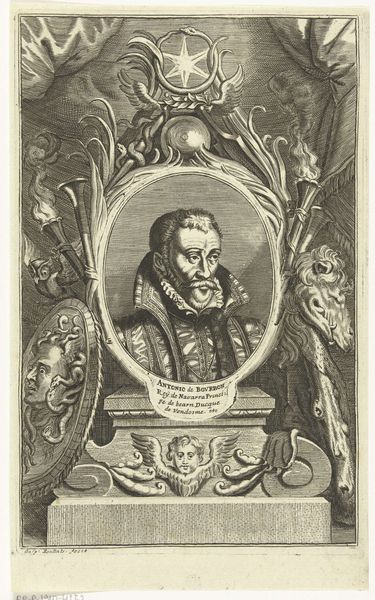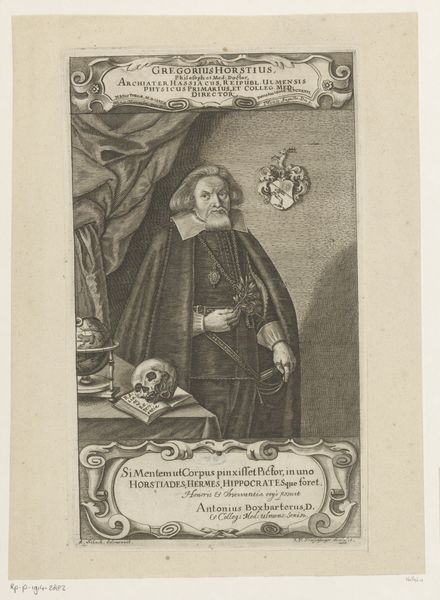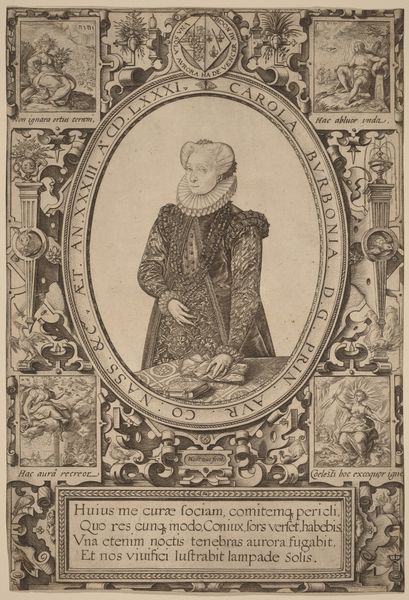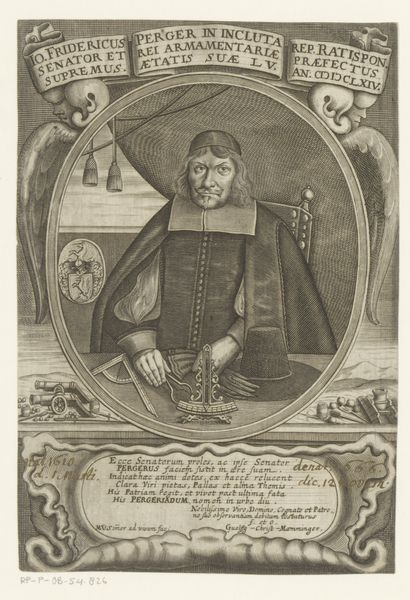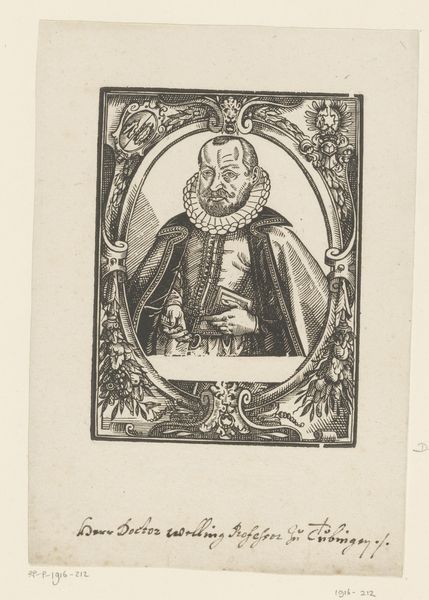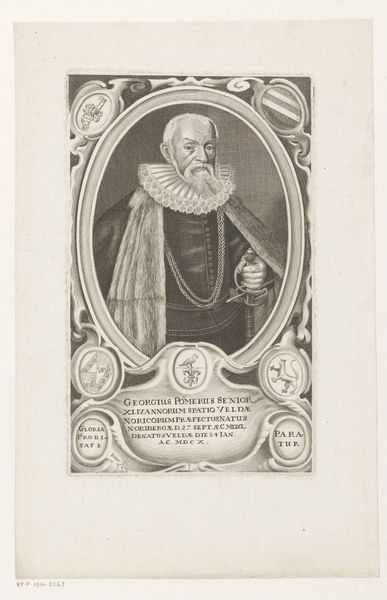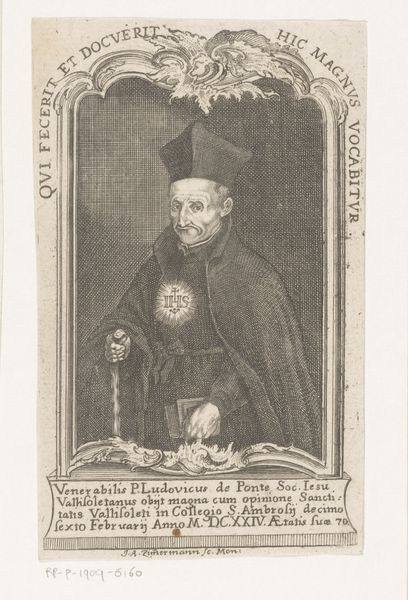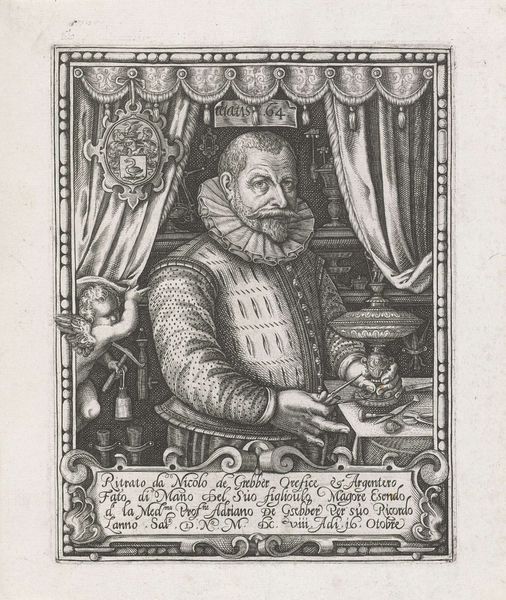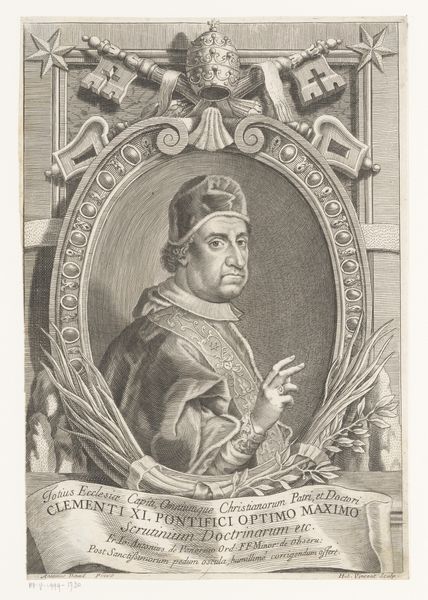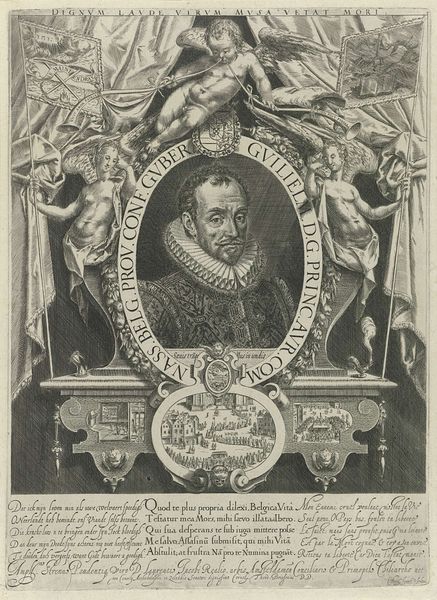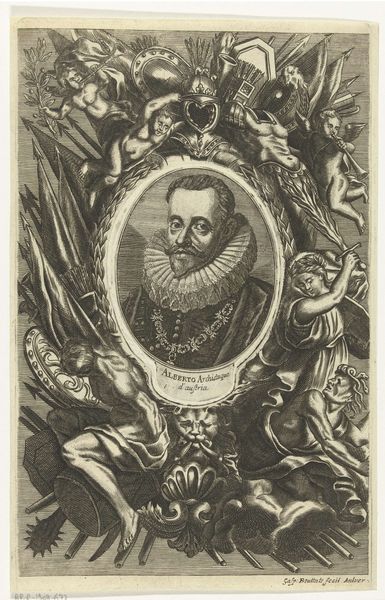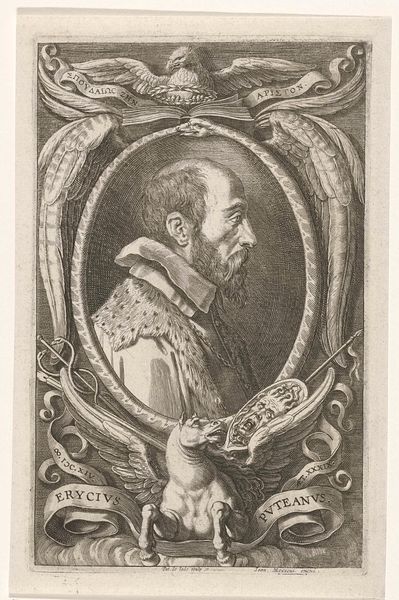
Maria Scotorv Regin et Franciae Dotaria, from "Heads of the Kings of England, and of several Famous Persons" 1735
0:00
0:00
drawing, print, engraving
#
portrait
#
drawing
#
baroque
# print
#
england
#
line
#
history-painting
#
engraving
Dimensions: Sheet (trimmed): 11 1/2 × 7 1/2 in. (29.2 × 19 cm)
Copyright: Public Domain
Curator: George Vertue, a name synonymous with early 18th-century English engraving, created this print in 1735. It is titled "Maria Scotorv Regin et Franciae Dotaria, from Heads of the Kings of England, and of several Famous Persons", and resides in the collection of the Metropolitan Museum of Art. Editor: Well, it strikes me as being rather somber. The stark black and white, the meticulous detail...it evokes a feeling of gravity, wouldn’t you agree? It's almost oppressive. Curator: It's a portrait, undoubtedly, rendered in a very baroque style with dramatic, curvilinear lines. Consider the compositional structure; the subject, framed within an oval, anchors the piece, while details like the crown, skull, and various symbolic adornments provide both depth and textual commentary. Note also, the intricate lines throughout create an astonishing degree of visual interest. Editor: Certainly. It's interesting to note how these additions of symbolic meaning situate Mary within a very political, highly moralistic context. She's not just a queen; she’s a figure laden with the weight of monarchy, mortality, and the gaze of history itself. And it shows, in what you term those baroque "curves," which have an undeniable heaviness and create an inescapable presence. Curator: Observe how the crown seems to float precariously above her head. Vertue deliberately employed light and shadow to guide our attention and reveal her face. Consider also the relationship of form and ground – that’s quite essential to understand the aesthetic effect here. Editor: Precisely. Vertue shapes not just an image but an ideology. The material history speaks through this print and shows how print functioned, creating political messages and ensuring a royal presence was broadly known across society. One cannot separate these two. This is an interpretation but it's clearly one guided by sociopolitical structures and institutions. Curator: Agreed. Overall, a rather thought-provoking and aesthetically pleasing example of baroque portraiture in print. Editor: Indeed. I walk away reflecting not only on Mary, but on the power that artistic portrayal carries.
Comments
No comments
Be the first to comment and join the conversation on the ultimate creative platform.
